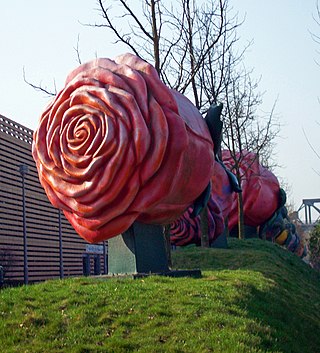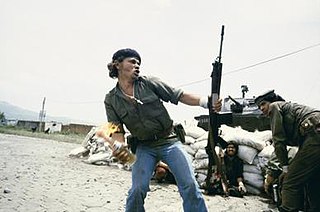
Fair use is a doctrine in United States law that permits limited use of copyrighted material without having to first acquire permission from the copyright holder. Fair use is one of the limitations to copyright intended to balance the interests of copyright holders with the public interest in the wider distribution and use of creative works by allowing as a defense to copyright infringement claims certain limited uses that might otherwise be considered infringement. The U.S. "fair use doctrine" is generally broader than the "fair dealing" rights known in most countries that inherited English Common Law. The fair use right is a general exception that applies to all different kinds of uses with all types of works. In the U.S., fair use right/exception is based on a flexible proportionality test that examines the purpose of the use, the amount used, and the impact on the market of the original work.

Moral rights are rights of creators of copyrighted works generally recognized in civil law jurisdictions and, to a lesser extent, in some common law jurisdictions.
The Visual Artists Rights Act of 1990 (VARA),, is a United States law granting certain rights to artists.
A copyright is the legal protection extended to the owner of the rights in an original work. Original work refers to every production in the literary, scientific, and artistic domains. The Intellectual Property Office (IPOPHL) is the leading agency responsible for handling the registration and conflict resolution of intellectual property rights and to enforce the copyright laws. IPOPHL was created by virtue of Republic Act No. 8293 or the Intellectual Property Code of the Philippines which took effect on January 1, 1998, under the presidency of Fidel V. Ramos.

Rogers v. Koons, 960 F.2d 301, is a leading U.S. court case on copyright, dealing with the fair use defense for parody. The United States Court of Appeals for the Second Circuit found that an artist copying a photograph could be liable for infringement when there was no clear need to imitate the photograph for parody.

Fanfiction has encountered problems with intellectual property law due to usage of copyrighted characters without the original creator or copyright owner's consent.
In United States copyright law, transformative use or transformation is a type of fair use that builds on a copyrighted work in a different manner or for a different purpose from the original, and thus does not infringe its holder's copyright. Transformation is an important issue in deciding whether a use meets the first factor of the fair-use test, and is generally critical for determining whether a use is in fact fair, although no one factor is dispositive.

Freedom of panorama (FOP) is a provision in the copyright laws of various jurisdictions that permits taking photographs and video footage and creating other images of buildings and sometimes sculptures and other art works which are permanently located in a public place, without infringing on any copyright that may otherwise subsist in such works, and the publishing of such images. Panorama freedom statutes or case law limit the right of the copyright owner to take action for breach of copyright against the creators and distributors of such images. It is an exception to the normal rule that the copyright owner has the exclusive right to authorize the creation and distribution of derivative works.

The following outline is provided as an overview of and topical guide to intellectual property:
In art, appropriation is the use of pre-existing objects or images with little or no transformation applied to them. The use of appropriation has played a significant role in the history of the arts. In the visual arts, "to appropriate" means to properly adopt, borrow, recycle or sample aspects of human-made visual culture. Notable in this respect are the readymades of Marcel Duchamp.
The copyright law of Australia defines the legally enforceable rights of creators of creative and artistic works under Australian law. The scope of copyright in Australia is defined in the Copyright Act 1968, which applies the national law throughout Australia. Designs may be covered by the Copyright Act as well as by the Design Act. Since 2007, performers have moral rights in recordings of their work.

In copyright law, a derivative work is an expressive creation that includes major copyrightable elements of a first, previously created original work. The derivative work becomes a second, separate work independent from the first. The transformation, modification or adaptation of the work must be substantial and bear its author's personality sufficiently to be original and thus protected by copyright. Translations, cinematic adaptations and musical arrangements are common types of derivative works.
The copyright law of the United States grants monopoly protection for "original works of authorship". With the stated purpose to promote art and culture, copyright law assigns a set of exclusive rights to authors: to make and sell copies of their works, to create derivative works, and to perform or display their works publicly. These exclusive rights are subject to a time and generally expire 70 years after the author's death or 95 years after publication. In the United States, works published before January 1, 1929, are in the public domain.

Banality is a series of sculptures by American artist Jeff Koons. The works were unveiled in 1988 and have become controversial for their use of copyrighted images. Several editions of the sculptures have sold at auction for millions of dollars.

Bill Graham Archives v. Dorling Kindersley, Ltd., 448 F.3d 605, is a 2006 case of the United States Court of Appeals for the Second Circuit regarding fair use of images in a pictorial history text. It affirmed the United States District Court for the Southern District of New York, which held at trial that the publisher's use of several images of past Grateful Dead concert posters and tickets, reduced considerably, in a timeline of the band's history was a sufficiently transformative use.

Cariou v. Prince, 714 F.3d 694 is a copyright case of the United States Court of Appeals for the Second Circuit, on the question of whether artist Richard Prince's appropriation art treatment of Patrick Cariou's photographs was copyright infringement or fair use. The Second Circuit held in 2013 that Prince's appropriation art could constitute fair use, and that a number of his works were transformative fair uses of Cariou's photographs. The Court remanded to the United States District Court for the Southern District of New York for reconsideration of five of Prince's works. The Supreme Court denied Cariou's petition for a writ of certiorari, and the case settled in 2014.

Molotov Man is the title by which a photograph taken by Susan Meiselas during the 1979 Nicaraguan Revolution has come to be known. Famous in its Nicaraguan context as a symbol of the Sandinista revolution, it has been widely reproduced and remixed.

Milpurrurru v Indofurn Pty Ltd was one of three Federal Court of Australia judgments in the 1990s involving the use of copyright law in Australia relating to Indigenous cultural and intellectual property (ICIP), the others being Yumbulul v Reserve Bank of Australia (1991) and Bulun Bulun v R & T Textiles (1998), or "T-shirts case".
Andy Warhol Foundation for the Visual Arts, Inc. v. Goldsmith is a U.S. Supreme Court case dealing with transformative use, a component of fair use, under U.S. copyright law. At issue was the Prince Series created by Andy Warhol based on a photograph of the musician Prince by Lynn Goldsmith. It held Warhol's changes were insufficiently transformative to fall within fair use for commercial purposes, resolving an issue arising from a split between the Second and Ninth circuits among others.

Blanch v. Koons, 467 F.3d 244, is a copyright case decided by the United States Court of Appeals for the Second Circuit in 2006. Fashion photographer Andrea Blanch sued appropriation artist Jeff Koons for copyright infringement after he used an image of a woman's lower legs taken from one of her photographs in a collage of his own. Koons claimed fair use, arguing he had transformed it sufficiently from its original purpose through his reuse. It is considered a significant case in addressing the latter issue.







